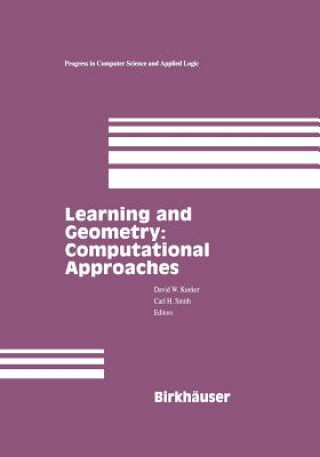
Doručení
Nákupní rádce





Nehodí se? Vůbec nevadí! U nás můžete do 30 dní vrátit
 Dárkový poukaz
V libovolné hodnotě
Dárkový poukaz
V libovolné hodnotě
S dárkovým poukazem nešlápnete vedle. Obdarovaný si za dárkový poukaz může vybrat cokoliv z naší nabídky.
Learning and Geometry: Computational Approaches
 Angličtina
Angličtina
 304 b
304 b
30 dní na vrácení zboží
Mohlo by vás také zajímat


The field of computational learning theory arose out of the desire to for mally understand the process of learning. As potential applications to artificial intelligence became apparent, the new field grew rapidly. The learning of geo metric objects became a natural area of study. The possibility of using learning techniques to compensate for unsolvability provided an attraction for individ uals with an immediate need to solve such difficult problems. Researchers at the Center for Night Vision were interested in solving the problem of interpreting data produced by a variety of sensors. Current vision techniques, which have a strong geometric component, can be used to extract features. However, these techniques fall short of useful recognition of the sensed objects. One potential solution is to incorporate learning techniques into the geometric manipulation of sensor data. As a first step toward realizing such a solution, the Systems Research Center at the University of Maryland, in conjunction with the Center for Night Vision, hosted a Workshop on Learning and Geometry in January of 1991. Scholars in both fields came together to learn about each others' field and to look for common ground, with the ultimate goal of providing a new model of learning from geometrical examples that would be useful in computer vision. The papers in the volume are a partial record of that meeting.
Informace o knize
 Angličtina
Angličtina




 Jak nakupovat
Jak nakupovat





























